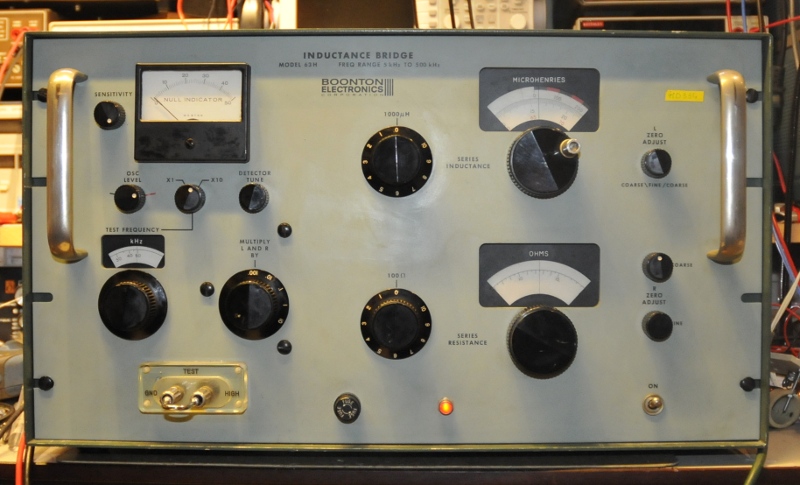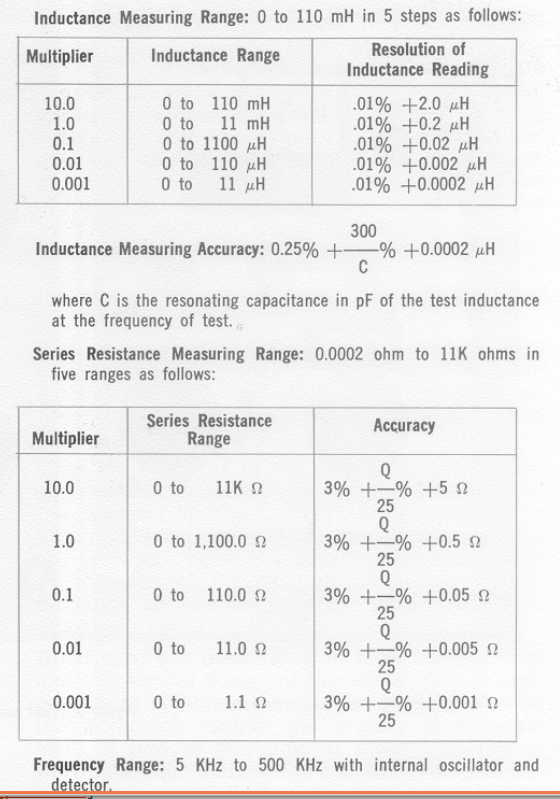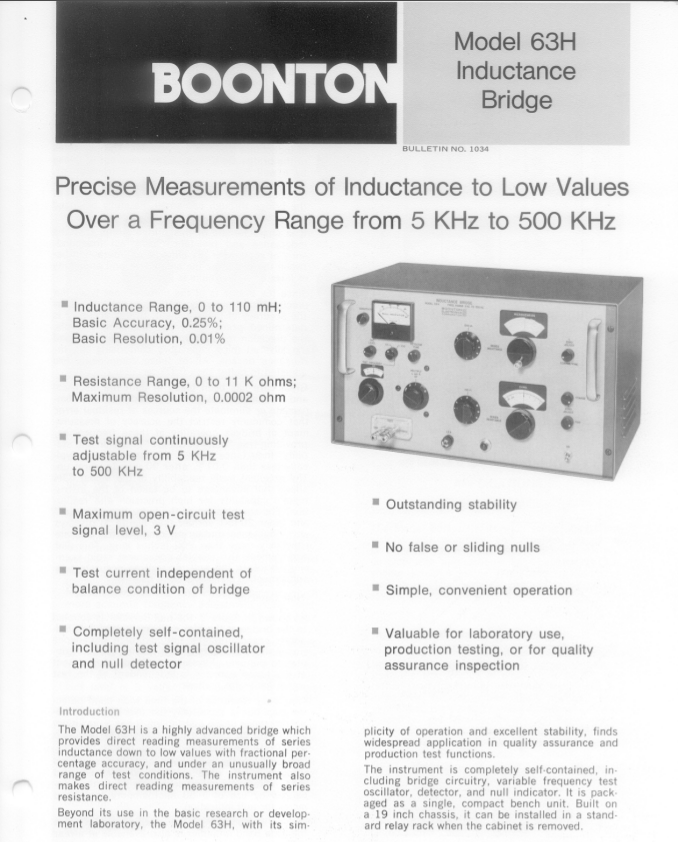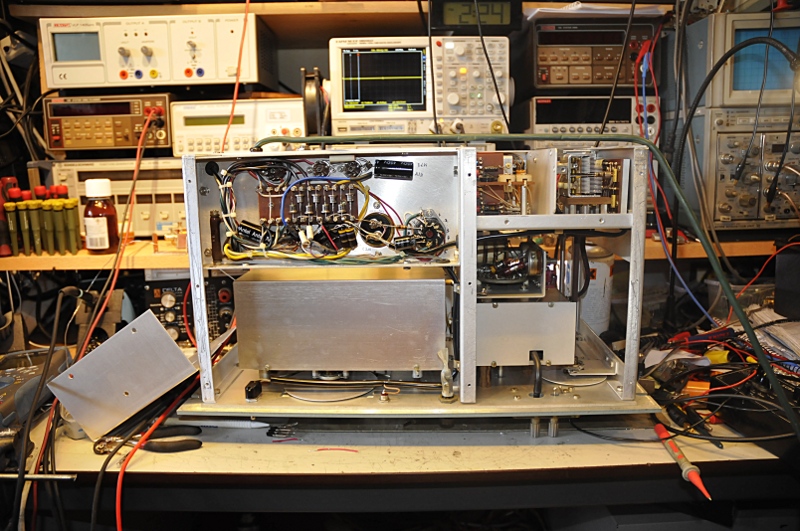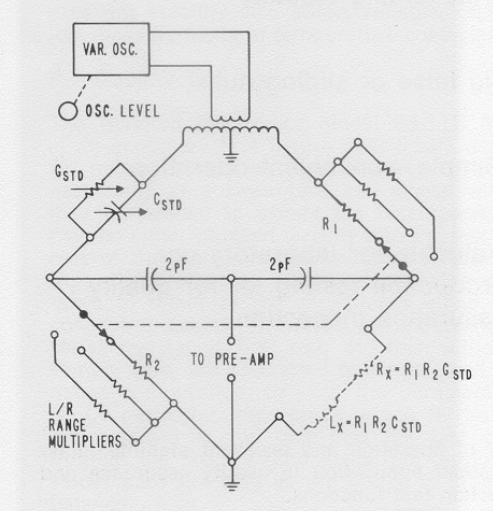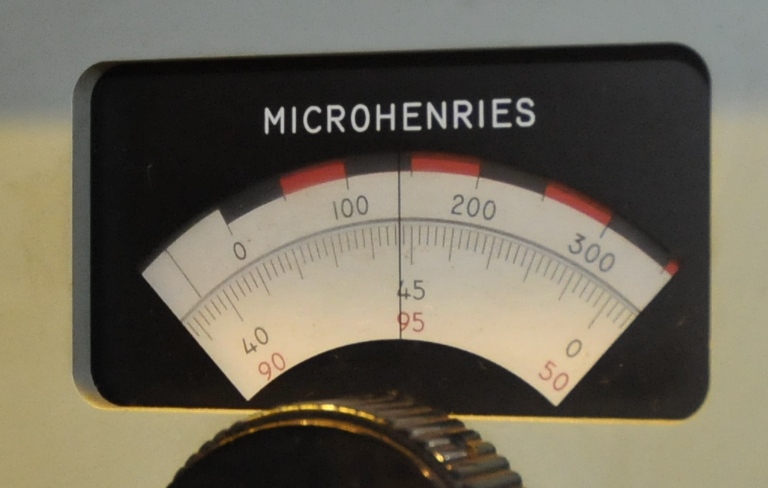This wonderfull bridge is from the Boonton electronics company. This is not the company that was bought by HP and made Q meters. That was the Boonton Radio Company. They were two of the many electronic companys in Boonton.
It is a 0,1% selfinductance and Ohm meter with a very high resolution and very big range. Resolution is 200 pH and 100 uOhm.
To bad the bridge was not working. The Wienbridge oscillator uses negative feedback through a 65A1 thermistor. An obscure glass housed NTC from the 50’s. Problem was this 5M thermistor working at probably 100 degrees and between 3300 and 4200 Ohm, was missing. After a lot of experiments with thermistors and resistors the results were not prommising. So I decided to follow the path that brought Bill Hewlett a lot of succes. I used a 10K potentiometer as negative feedback and removed the 1K5 cathode resistor and replaced it with a 24V 200 Ohm lightbulb. after some tests and measurements using the curvetracer I added lightbulbs until it was good. And after mounting it the oscillator worked perfect again.
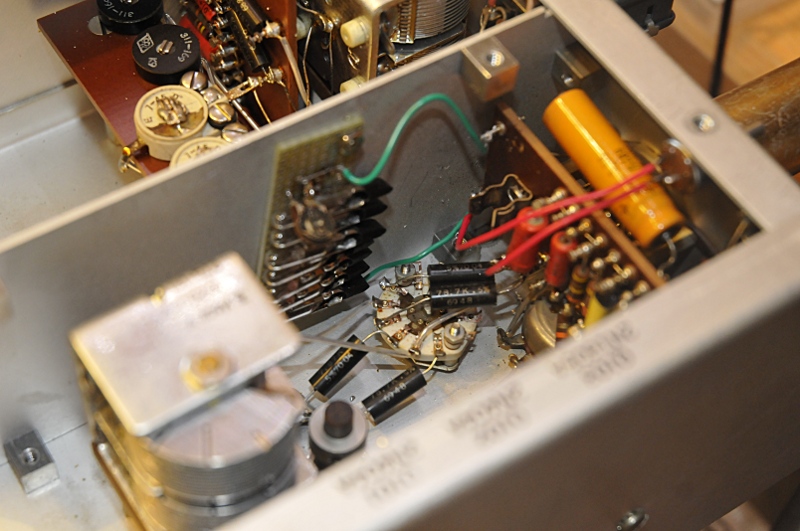
The Hewlett modification. With thanks to Jim Williams brilliant explanation in his book about this oscillator
The little pcb on the left is holding the 6 lightbulbs and a 500 ohm trimmer. The two red wires are for the 10K feedback potentiometer. THD is very good. “Problem” 2 was I missed the low output. The 100uF couple capacitor between emitter follower and bridge transformer was reduced to 5nF. After replacement all was well.
As usual the first thing to look for is the powersupply. I had to replace a few caps. The original are still there for the looks. The new ones are mounted under the chassis.
This is reading 100+44.7 = 144.7 uH. but the switch is in the x0.001 position so it is reading 144.7 nF. if the line is in rood you use the red numbers, otherwise, like here the black ones.
